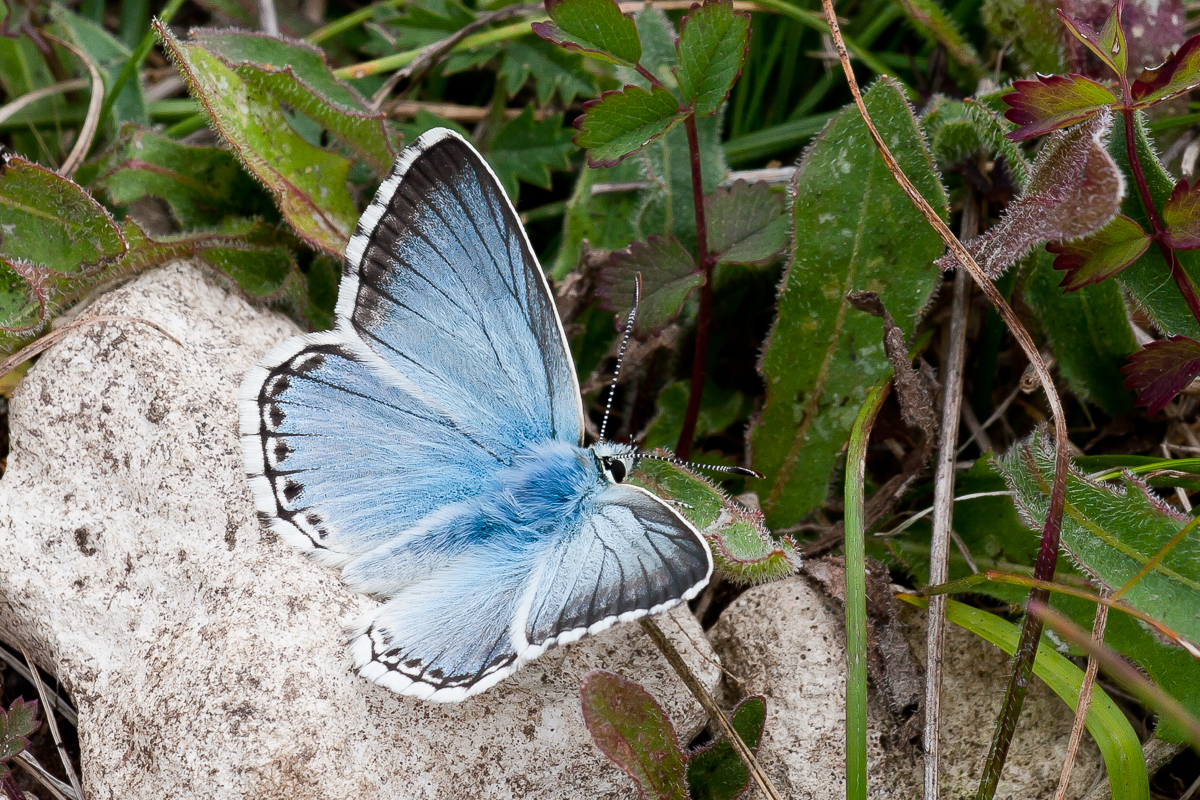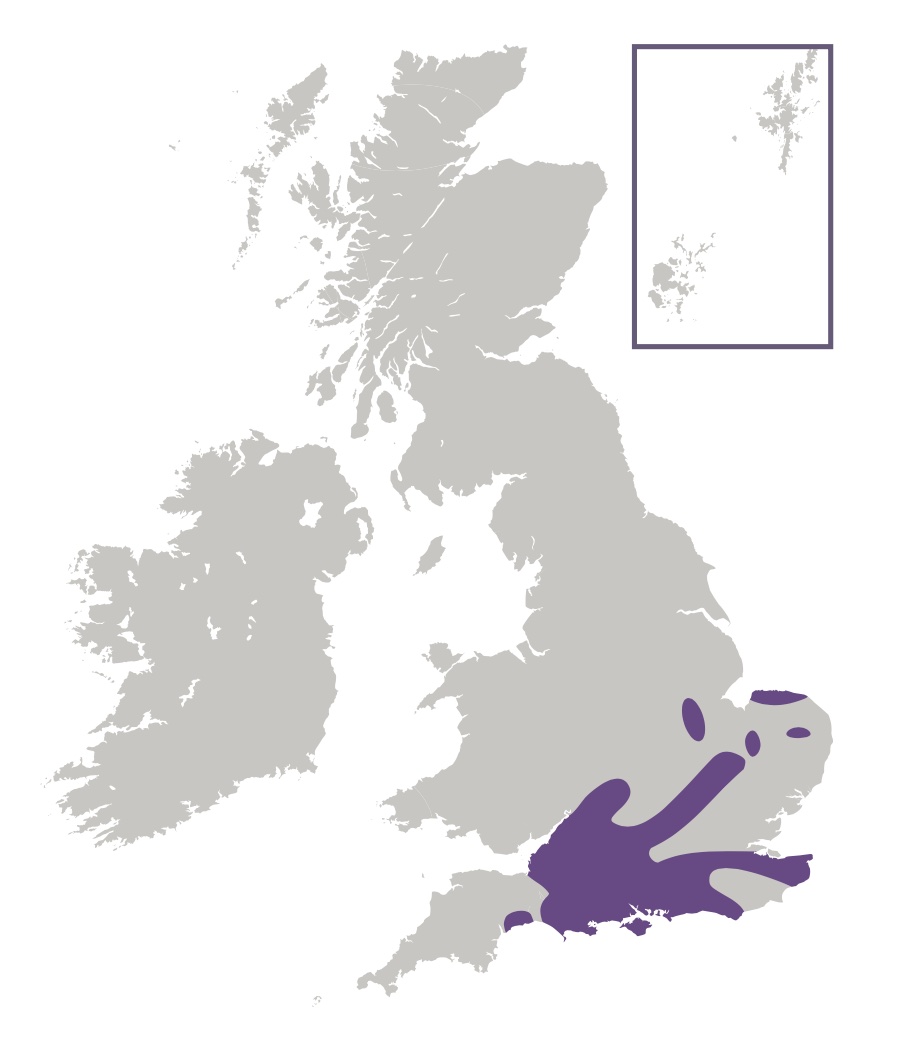
Photo © Peter Eeles
As its name suggests, the Chalk Hill Blue is found on chalk downland, although limestone downland is also used. The adult butterfly is most-often seen in bright sunshine, where the ground may appear to shimmer with the activity of hundreds, if not thousands, of males searching for a mate just a few inches above the ground. The distribution of this species follows the distribution of Horseshoe Vetch which, in turn, follows the distribution of chalk and limestone grassland. This species is therefore restricted to England, south east of a line running from West Gloucestershire in the west and Cambridgeshire in the east. This species is absent from most of central England, northern England, Scotland, Wales, Ireland, the Isle of Man and the Channel Islands.
The sexes are strongly dimorphic; the males being a pale sky blue, and the females being a chocolate brown. The adults use a variety of nectar sources, and the males will also visit, often in some numbers, moist earth or animal droppings to gather salts and minerals.
At good sites, this species can be found roosting communally on grass stems at the lower slopes of a hillside, occasionally with several individuals on the same stem. This is a highly-variable butterfly and many named aberrations of this species exist.

This species lives in discrete colonies where its foodplant, Horseshoe Vetch, is found in abundance. It is also a warmth-loving butterfly, and is typically found on sheltered, south-facing hillsides.
Adults feed primarily on Common Bird's-foot-trefoil (Lotus corniculatus), Field Scabious (Knautia arvensis), knapweeds (Centaurea spp.), Selfheal (Prunella vulgaris), thistles (Carduus spp. and Cirsium spp.) and Wild Thyme (Thymus drucei).
The primary larval foodplant is Horseshoe Vetch (Hippocrepis comosa).
